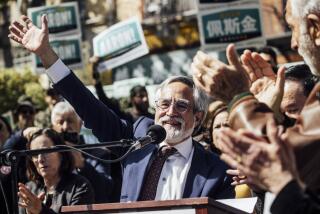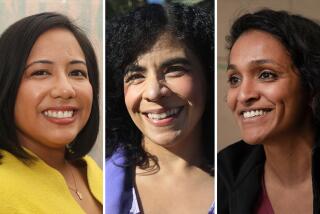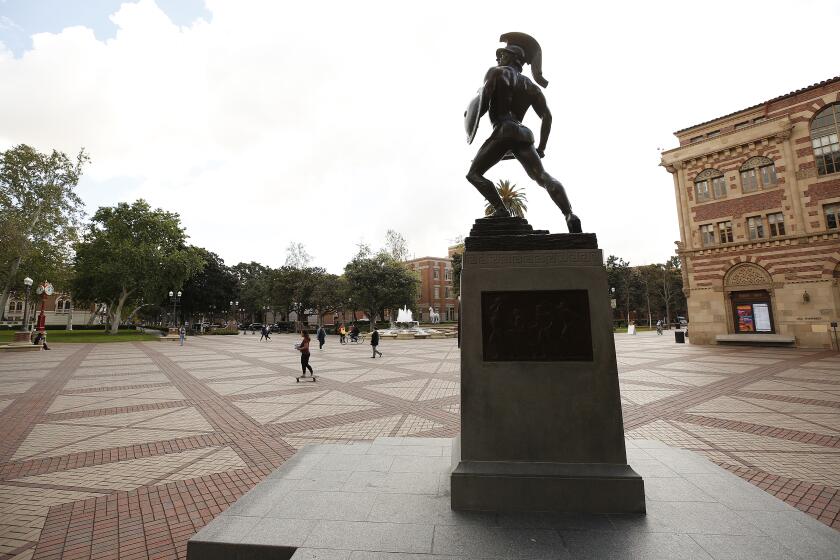Newton: Labor’s agendas
This has been a complicated season for organized labor in Los Angeles.
On the one hand, labor got the mayor’s race it wanted: Controller Wendy Greuel and Councilman Eric Garcetti both have a long history of supporting, and being supported by, unions. Labor-supported candidates also have fared well in City Council races and stand poised to help protect a union agenda.
At the same time, extravagant spending by the unions that represent employees of the Department of Water and Power and the Los Angeles Police Department has produced a backlash and scrambled the city’s politics. Greuel was poised to run as a centrist alternative to the more liberal Garcetti, but the support of those unions has driven conservatives to Garcetti, a bewildering turn of events compounded by the Greuel campaign’s ham-handed attempts to brush it away.
ENDORSEMENTS: Los Angeles City Elections 2013
All of this has created a characterization of labor in Los Angeles that is partly accurate — it is a powerful, important and often self-interested force in civic life — and partly a caricature. Labor isn’t all powerful, isn’t principally focused on electing candidates and isn’t the narrow tool for self-enrichment that its critics contend.
Maria Elena Durazo, who heads the County Federation of Labor, sat down with me last week to take stock of this campaign. She acknowledged that it’s been frustrating. She’s been particularly distressed to see so much attention focused by Garcetti and the media, especially The Times, on the role played by the IBEW, the union representing DWP workers. Still, the IBEW’s spending gave Garcetti a powerful issue, and he can hardly be blamed for making the most of it.
Where I share Durazo’s frustration is with the narrowing effect that the debate over union power has had on the campaign. As Durazo pointed out, the vast majority of union energy here is devoted to organizing, not electing candidates. In recent years, the federation has fought for better wages and benefits for some of the county’s most marginalized workers, including home healthcare aides, janitors, carwash workers and others. Those efforts, and others on behalf of truckers at the port and supermarket employees, have produced important victories, often achieved with help from environmentalists and even business, and make Los Angeles a rare center of union vitality.
WATCH: Garcetti video interview | Greuel video interview
“We are mostly focused on how to pull people out of poverty and into the middle class,” Durazo said, sitting in front of two portraits, one of Cesar Chavez and one of her late husband, Miguel Contreras, who preceded her in heading the County Fed. The labor organization’s commitment to low-wage workers also helps explain its other major effort: immigration reform, which Durazo sees as a crucial component in protecting vulnerable workers from exploitation.
Durazo is frustrated that the mayor’s race, despite its avalanche of debates and talking points, has failed to focus on many of the issues she considers central to life in Los Angeles, including income inequality and widespread poverty among city residents.
She is passionate about these issues, citing statistics to bolster her points. The average Wal-Mart employee, she notes, would need to work for 785 years to make as much as that company’s chief executive officer makes in just one. And more than 1 in 5 residents of this city, including more than 300,000 children, live in poverty.
PHOTOS: A rogues’ gallery of L.A. mayors
What could a mayor do about that? For starters, she says, Los Angeles could follow the lead of Long Beach and require more companies doing business within its borders to pay a living wage. It could emulate other jurisdictions that are considering laws to require paid sick leave. Mayors, Durazo notes, can help the poor.
At the same time, there will surely be points of disagreement as the next mayor struggles to close a budget gap created in part because of raises approved by Antonio Villaraigosa (and supported by both Greuel and Garcetti). In his parting budget, Villaraigosa suggested that the city could regain its equilibrium in part by rolling back the raises he saddled it with. Workers may also need, as Villaraigosa and Garcetti have suggested, to chip in more for their healthcare.
That won’t be easy, but one of those who sees room for collaboration is Austin Beutner, the wealthy investor who worked for a time as Villaraigosa’s deputy mayor and briefly entered the mayor’s race himself.
“Inside the building, labor has a pretty important voice,” he told me last week, reflecting on his time at City Hall. “But labor has just as much of an interest in the long-term viability of the city as you or I do.”
City workers did not create this problem, but they may have to sacrifice again to solve it. The challenge for the next mayor should not be merely to fix the budget but also to address the larger questions that labor is appropriately raising.
Jim Newton’s column appears Mondays. His latest book is “Eisenhower: The White House Years.” Reach him at jim.newton@latimes.com or follow him on Twitter: @newton_jim.
More to Read
A cure for the common opinion
Get thought-provoking perspectives with our weekly newsletter.
You may occasionally receive promotional content from the Los Angeles Times.











